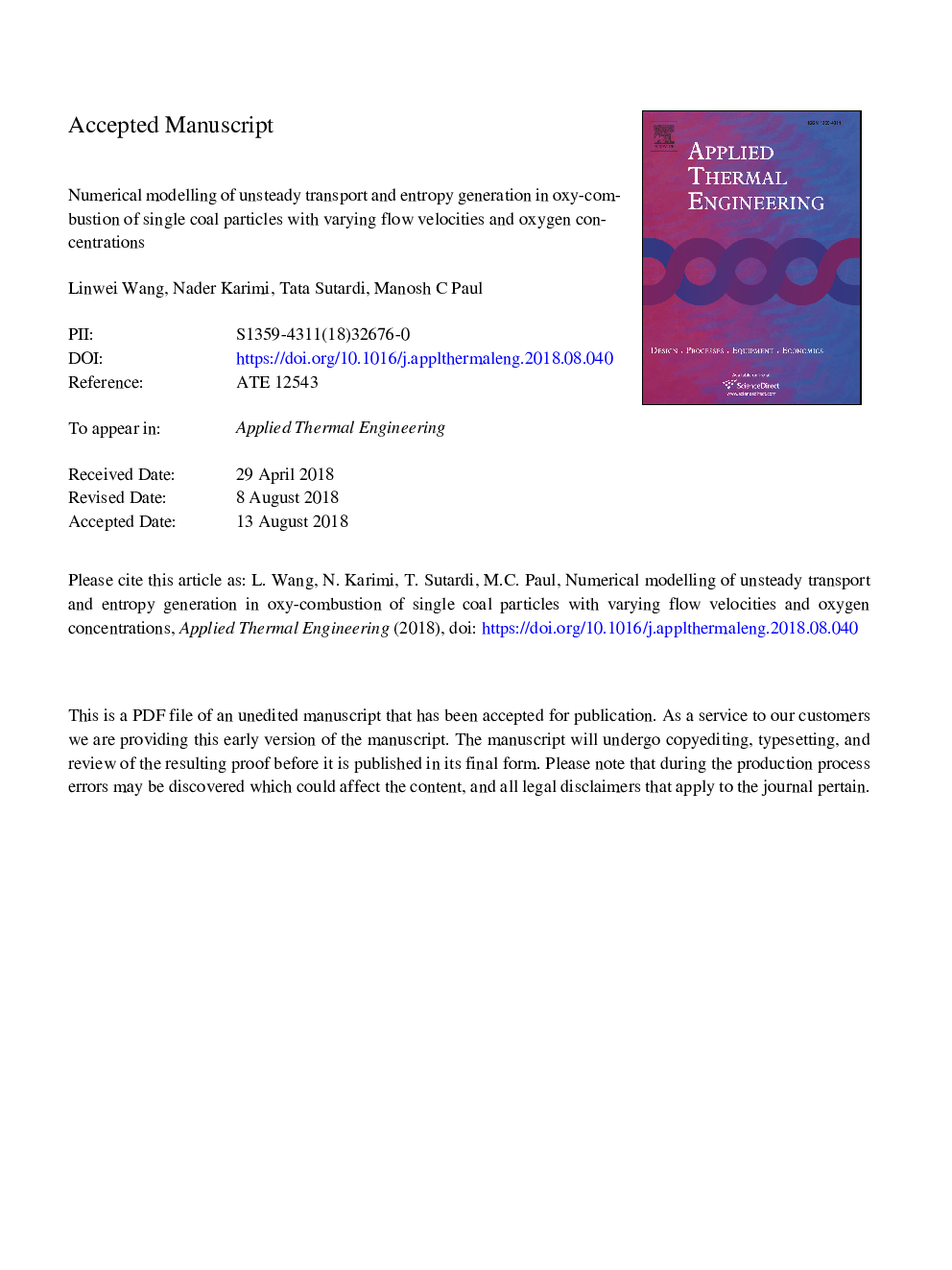| Article ID | Journal | Published Year | Pages | File Type |
|---|---|---|---|---|
| 8941924 | Applied Thermal Engineering | 2018 | 36 Pages |
Abstract
Unsteady generation of entropy and transfer of heat and chemical species in the transient oxy-combustion of a single coal particle are investigated numerically. The burning process takes place in oxygen and nitrogen atmospheres with varying chemical compositions and under either quiescent or active flows. The combustion simulations are validated against the existing experimental data on a single coal particle burning in a drop-tube reactor. The spatio-temporal evolutions of the gas-phase temperature and major gaseous species concentration fields as well as that of entropy generation are investigated for the two types of gas flow. It is shown that the rates of production and transport of chemical species reach their maximum level during the homogenous combustion of volatiles and decay subsequently. Yet, the transient transfer of heat of combustion continues for a relatively long time after the termination of particle life time. This results in the generation of a large amount of thermal entropy at post-combustion stage. The analyses further indicate that the entropy generated by the chemical reactions is the most significant source of unsteady irreversibilities. Most importantly, it is demonstrated that a slight oxygenation of the atmosphere leads to major increases in the total chemical entropy generation and, thus it significantly intensifies the global irreversibilities of the process. However, upon exceeding a certain mole fraction of oxygen in the atmosphere, further addition of oxygen only causes minor increases in entropy generation. This trend is observed consistently in both quiescent and active flow cases.
Related Topics
Physical Sciences and Engineering
Chemical Engineering
Fluid Flow and Transfer Processes
Authors
Linwei Wang, Nader Karimi, Tata Sutardi, Manosh C. Paul,
